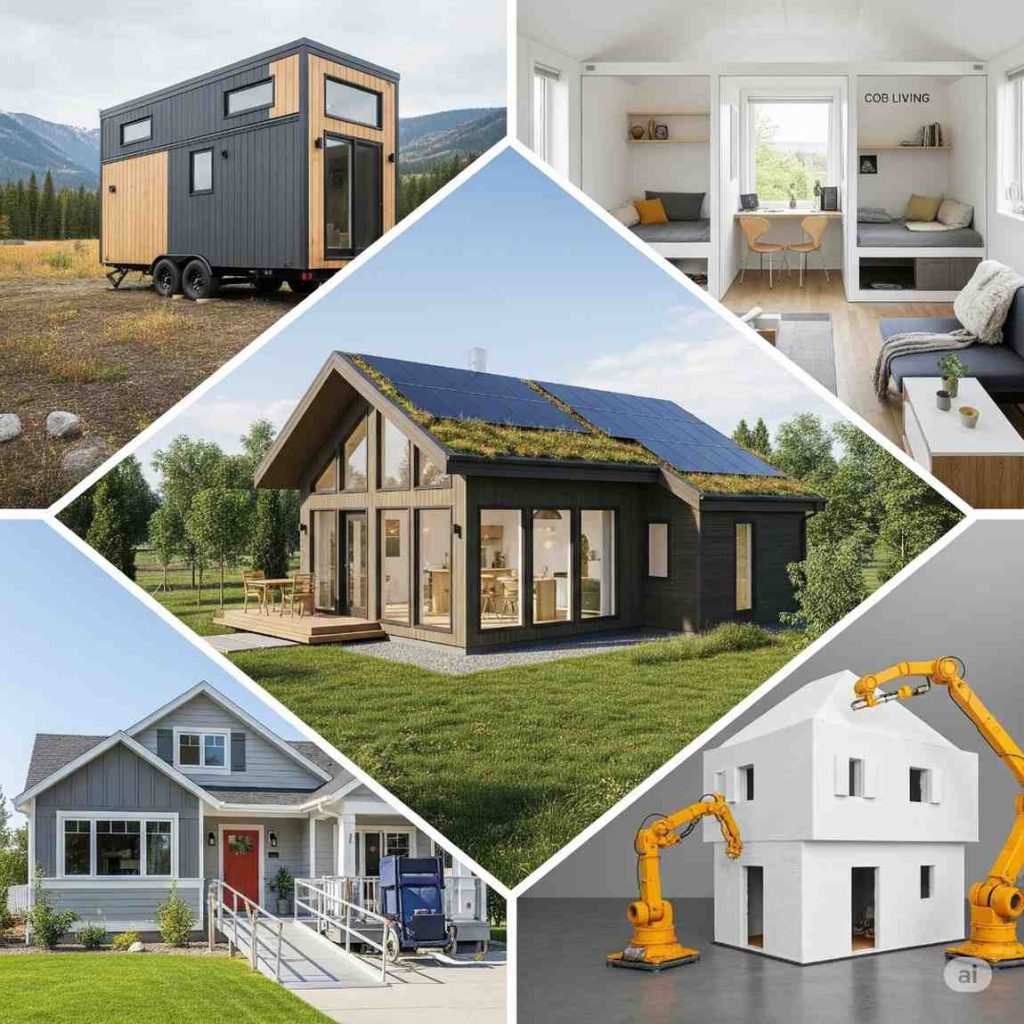Customized Housing Solutions Meeting Modern Housing Requirements
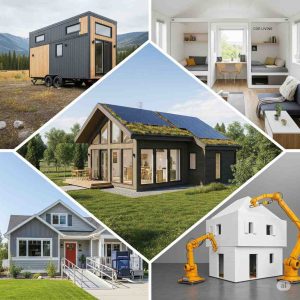
- In today’s rapidly changing world, housing is no longer just about shelter — it’s about creating spaces that align with people’s evolving needs, preferences, and lifestyles. From nuclear families and senior citizens to differently-abled individuals and low-income communities, everyone has distinct housing requirements. This has given rise to a new era in residential design: customized housing solutions.
-
What Are Housing Requirements?
- Housing requirements refer to the specific needs that individuals or groups have regarding their living customized housing solutions modern housing requirements spaces. These can vary based on a variety of factors “Customized Housing Solutions: Meeting Modern Housing Requirements”
-
Economic conditions including income level and affordability
-
Geographic and climatic factors
-
Cultural and social preferences
-
Health and accessibility needs
- For example, a senior citizen might need a single-level home with wide doorways and handrails, while a young working couple may prefer a compact smart home with modern technology. “Customized Housing Solutions: Meeting Modern Housing Requirements” customized housing solutions modern housing requirements
- The Role of Customized Housing Solutions
- Customized housing solutions are designed to address these unique needs rather than providing a one-size-fits-all model. These solutions focus on flexibility, accessibility, affordability, and sustainability, helping people live better and more comfortably.” Customized Housing Solutions: Meeting Modern Housing Requirements”
- 1. Design Flexibility
- Homes are increasingly being built with modular, adaptable designs. Rooms can be rearranged, expanded, or repurposed depending on the family’s needs. customized housing solutions modern housing requirements
- 2. Technological Integration
- Smart homes are no longer luxury options. From voice-activated appliances to remote security systems, technology is helping homeowners manage energy, safety, and comfort more efficiently. “Customized Housing Solutions: Meeting Modern Housing Requirements”
-
3. Accessibility Features
- People with disabilities or elderly residents require homes with ramps, elevators, low counters, non-slip flooring, and accessible bathrooms. customized housing solutions modern housing requirementsCustomized housing ensures these needs are met without compromising style or utility. “Customized Housing Solutions: Meeting Modern Housing Requirements”
-
4. Affordable Custom Housing
- Governments and private developers are working on affordable housing schemes that allow for basic customization, such as layout changes, upgrades in materials, or the inclusion of eco-friendly features.
Examples of Customized Housing in Action
-
Urban Redevelopment: In densely populated cities, old housing clusters are being transformed into vertical housing units with customizable interiors. “Customized Housing Solutions: Meeting Modern Housing Requirements”
-
Eco-Friendly Homes: Green housing with solar panels, rainwater harvesting, and natural ventilation tailored to local climate conditions. customized housing solutions modern housing requirements
-
Post-Disaster Housing: In areas prone to earthquakes or floods, homes are designed with reinforced structures and elevated platforms. “Customized Housing Solutions: Meeting Modern Housing Requirements”
-
Benefits of Customized Housing
-
Improved Quality of Life – Residents feel more comfortable and safe in spaces designed for their specific needs.
-
Greater Satisfaction – Homeowners are more likely to be satisfied when they can make design choices.
-
Efficient Use of Space – Custom layouts reduce clutter and improve functionality.
-
Future-Ready Designs – Modular designs allow easy expansion as the family grows or needs change.
-
Environmental Sustainability – Custom homes can be optimized for local climates and natural resources.
- The Future of Housing: Personalization at the Core
- As urbanization grows and the world faces challenges like climate change, migration, and aging populations, the demand for personalized housing will only increase. Innovations in AI, modular construction, and smart materials will make customized housing more accessible and scalable.
-
Customized Housing for Different Age Groups customized housing solutions modern housing requirements
- Different age groups have unique lifestyles, preferences, and physical needs — and housing must evolve to reflect that. Customized housing ensures that people of all ages live in environments that support comfort, safety, and functionality. “Customized Housing Solutions: Meeting Modern Housing Requirements”
- 1. Children and Young Families
- For young families with children, housing must be:
-
Safe and child-friendly (covered electrical outlets, stair gates, enclosed balconies)
-
Spacious and flexible for play, learning, and growing needs
-
Located near schools, parks, and healthcare facilities
-
Designed with open spaces for visibility and supervision
- 2. Young Adults and Working Professionals
- Young adults often prioritize:
-
Compact and affordable living spaces such as studio apartments or shared accommodations
-
Proximity to workplaces, public transport, and city centers
-
Smart features like home automation and high-speed internet
-
Low-maintenance, modern interiors
- 3. Middle-Aged Adults
- People in their 40s and 50s may seek:
-
Spacious homes with multiple bedrooms
-
Private workspaces for remote working
-
Energy-efficient appliances and sustainable materials
- 4. Senior Citizens
- Elderly residents need homes that prioritize:
-
Accessibility (ramps, handrails, no-step entries, wider doorways)
-
Single-story layouts or homes with elevators
-
Anti-slip flooring, emergency response systems, and good lighting
-
Quiet neighborhoods with access to healthcare and social facilities
Why Age-Specific Customization Matters
-
Enhances safety and mobility
-
Improves quality of life and mental well-being
-
Reduces the need for future renovations “Customized Housing Solutions: Meeting Modern Housing Requirements”
-
Flexible Floor Plans: Easily transformable rooms based on changing household needs.
-
Shared Housing Models: Common in urban areas, designed for professionals or students.
-
Sustainable Designs: Energy-efficient systems to support resource-heavy larger families.
-
Technology Integration: Smart lighting, security, and appliances that cater to different user preferences in the same household.
Promotes independent living for all age groups
Household Size and Design: Creating Homes That Fit Every Family customized housing solutions modern housing requirements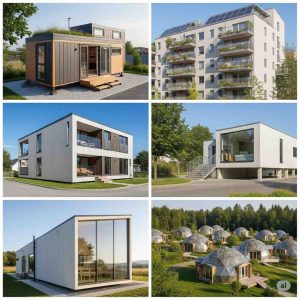
The way we design homes is deeply influenced by household size — the number of people living under one roof. Whether it’s a single individual, a nuclear family, or a large joint family, the size and composition of a household directly affect the layout, space usage, and features of a home. Understanding the relationship between household size and design is essential for building comfortable, functional, and efficient living environments. “Customized Housing Solutions: Meeting Modern Housing Requirements”
🔹 What Is Household Size?
Household size refers to the number of individuals who live together in a single housing unit and share living arrangements. It can include:
-
Single-person households
-
Nuclear families (parents and children)
-
Joint or extended families
-
Shared housing (roommates or non-family individuals)
🔹 Why Household Size Matters in Home Design customized housing solutions modern housing requirements
The number of people in a household affects key aspects of housing such as:
✅ Space Requirements
-
Smaller households may need compact homes with fewer rooms.
-
Larger households need multiple bedrooms, larger kitchens, and multiple bathrooms.
✅ Room Functionality
-
More members may require dedicated study areas, dual living rooms, or multiple storage spaces. Customized Housing Solutions: Meeting Modern Housing Requirements
-
Shared or multi-use rooms are common in smaller homes. “Customized Housing Solutions: Meeting Modern Housing Requirements”
✅ Privacy Considerations
-
In bigger households, zoned spaces for different age groups or genders are essential.
-
Separate entrances, en-suite bathrooms, and partitioned areas help maintain privacy. Customized Housing Solutions: Meeting Modern Housing Requirements
✅ Utility and Resource Usage
-
Larger families consume more water, electricity, and storage, affecting infrastructure needs.
-
Proper planning can improve energy efficiency and reduce long-term costs.
🔹 Designing Homes for Different Household Sizes customized housing solutions modern housing requirements
🏡 1. Single-Person Homes
-
Compact studio apartments or 1BHK units
-
Open-plan living to maximize space
-
Emphasis on storage and easy maintenance
🏡 2. Small Families (2–4 Members)
-
2 or 3-bedroom homes with flexible room layouts
-
Combined living-dining areas
-
Smart storage and space-saving furniture
🏡 3. Medium to Large Families (5+ Members)
-
Multiple bedrooms and bathrooms
-
Separate family room and children’s play/study room
-
Large kitchen and dining areas
-
Separate utility or service areas
🏡 4. Joint or Multigenerational Families
-
Multi-floor or duplex homes
-
Designated living spaces for each generation
-
Accessibility features for elderly family members
-
Open courtyards or shared common areas
Modern Trends in Household Design
Target Audience Demographics: Understanding Your Market for Better Results
In today’s competitive world, success in marketing, product design, and service delivery largely depends on how well you understand your target audience. One of the most crucial steps in this process is analyzing target audience demographics — the measurable characteristics of a specific group of people.
Whether you’re building homes, running a business, launching a new product, or creating online content, knowing who your audience is helps you deliver what they truly need. https://www.youtube.com/shorts/NStC0Sc0Pbs
🔹 What Are Target Audience Demographics? customized housing solutions modern housing requirements
Target audience demographics refer to the statistical data used to define and segment a particular group of people you want to reach with your product, service, or content. These demographics help businesses and organizations identify 
-
Who their customers are
-
What their preferences may be
-
How to best engage with them
🔹 Key Demographic Factors
The most common demographic characteristics used to define a target audience include Customized Housing Solutions: 
-
Age
-
Children, teenagers, young adults, middle-aged adults, and seniors all have different needs and preferences.
-
-
Gender
-
Marketing strategies can differ based on whether the target is male, female, or non-binary. Customized Housing Solutions: Meeting Modern Housing Requirements Income Level
-
Low, middle, or high-income groups will influence product pricing and design.
-
-
Education Level
-
Determines how complex or
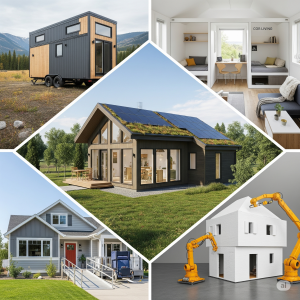 the messaging should be.
the messaging should be.
-
-
Occupation
-
Professionals, students, homemakers, and retirees have distinct lifestyles and buying habits.
-
-
Family Size and Structure
-
Single, married, with children, joint families — all affect consumer behavior.
-
-
Geographic Location
-
Urban vs rural, local vs global — location impacts preferences, culture, and access.
-
-
Cultural and Ethnic Background
-
Culture shapes purchasing decisions, housing styles, and communication.
-
- Why Are Target Audience Demographics Important? customized housing solutions modern housing requirements
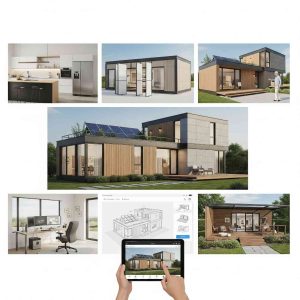
Understanding demographics helps businesses and organizations:
-
🎯 Create better marketing campaigns
→ Tailored ads, content, and messaging connect better with specific groups. Customized Housing Solutions: Meeting Modern Housing Requirements -
🛍️ Design the right products and services
→ A product meant for teenagers will differ significantly from one for senior citizens. -
📈 Improve customer satisfaction
→ When people feel a brand understands them, they’re more likely to stay loyal. -
🏗️ Plan housing or infrastructure effectively
→ Real estate developers use demographic data to design homes that suit different family types. “Customized Housing Solutions: Meeting Modern Housing Requirements”
🔹 Example: Target Demographics in Action
Let’s say a real estate developer is launching a new housing project. Customized Housing Solutions: Meeting Modern Housing Requirements
-
If targeting young professionals, they may offer Customized Housing Solutions: Meeting Modern Housing Requirements
-
Studio apartments
-
Smart home features
-
Proximity to business districts
-
-
If targeting retired seniors, they may design:
-
Single-story homes
-
Medical and security features
-
Peaceful communities with parks
-
This customization is only possible when demographic insights are used effectively.
🔹 Tools to Collect Demographic Data
-
Surveys and Feedback Forms
-
Google Analytics
-
Social Media Insights
-
Census Reports
-
Market Research Firms
These tools help collect, organize, and analyze data about your audience to make informed decisions.
